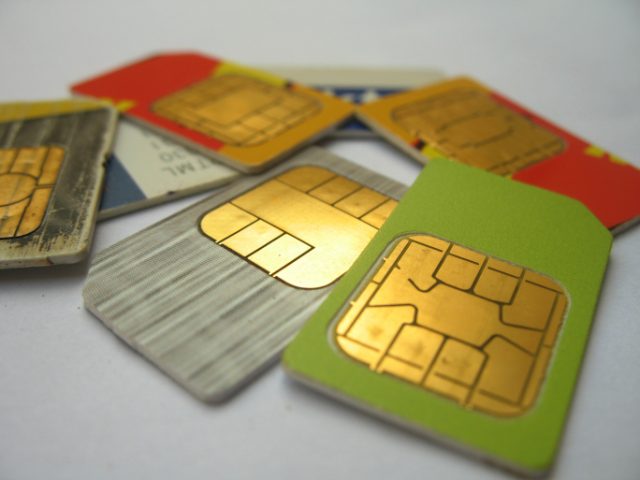
The nano-SIM design proposed by Apple has been approved by the European Telecommunications Standards Institute (ETSI), opening the door for the creation of even smaller SIM cards and the continued shrinking of smartphone hardware. ETSI announced its decision on Friday morning, choosing Apple's submission over proposals from Motorola, RIM, and Nokia.
The new SIM card design is the fourth form factor (4FF) and is 40 percent smaller than the micro-SIM that is currently popular in today's cell phones. The exact dimensions of the nano-SIM will be 12.3mm wide, 8.8mm high, and 0.67mm thick (0.48" x 0.35" x 0.03"), according to ETSI. And, when it hits the market, it will be packaged so that it's backwards compatible with slots designed to fit the current micro-SIM. This will enable the new SIM to work with older handsets while phone manufacturers work to develop newer hardware that can take advantage of the smaller dimensions.
"Today's SIM card designs take up a significant amount of space inside a mobile device," ETSI said in a statement. "This space is more and more valuable in today's handsets which deliver an ever-increasing number of features."
Although Apple's design had the support of a number of European cell carriers, the competition among the companies was quite fierce. RIM, Nokia, and Motorola all argued that their own designs would cause less damage to a handset when inserted, therefore making them superior to Apple's design. Nokia even went so far as to say that it would refuse to license Apple's standards-essential patents if it won.
"We believe that Apple is mis-using the standardization process, seeking to impose its own proprietary solution on the industry and using ETSI merely to rubber stamp its proposal, rather than following established principles and practices," Nokia said in a statement in March of this year. "We have informed ETSI that, if Apple's proposal is selected, then Nokia will not license its relevant patents to that standard."
This was despite the fact that Apple wrote in a letter to ETSI that it would offer royalty-free licenses for its nano-SIM design.
Still, Apple did end up making some changes to its design last month in response to the controversy, as did RIM and Motorola. In fact, both sides ended up inching toward each other so much with their modifications that Apple's newly approved design is only different from RIM/Motorola's in minuscule ways. Both 4FF SIMs are the same dimensions on the outside, but RIM/Motorola's differs because it has a notch that would allow handsets to use "push-push" designs instead of sliding trays for the SIM cards. ("Push-push" allows you to push the SIM into the slot, and then push it again in order to get it to pop out.) (Update: this paragraph originally stated that Apple's design was the one with the notch, which was backwards. It has since been corrected.)
ETSI didn't specifically name Apple as the winner in its announcement on Friday, but as noted by Macworld, the winner of the ETSI decision was identified by a member of the committee, Giesecke & Devrient. ETSI has also declined to comment on how the decision was made, which is unfortunate since many argue that the notched design would have been superior to the tray design. "We now have an ETSI standardized format for 4FF," the group said in a statement to The Verge. "It's no longer a question of one company or another, the industry has collectively made a decision."
As for what the decision means for consumers, some will care about the shrinking SIM specifications and most others will remain completely oblivious. What most consumers will see in the coming years will be smaller and thinner handsets—as we know from various teardowns of popular smartphones, manufacturers tend to pack them as tightly as they can with components in order to keep physical size to a minimum. A 40-percent-smaller SIM means phone manufacturers can continue to reduce handset bulk, or even add newer components that might need a little more space.
As for Nokia, it seems the company has come around from its original position on Apple's design—sort of. "Nokia continues to believe that the selected nano-SIM proposal is technically inferior and not suitable for a number of applications, but the ETSI Smart Card Platform Technical Committee has now made its decision," the company said in a statement. "As Nokia believes that ETSI has taken steps to address Nokia's original concerns over the standardization process, we have advised ETSI that we are prepared to license any Nokia patents which are essential to implement the standard, on [fair, reasonable, and non-discriminatory] terms."
reader comments
108